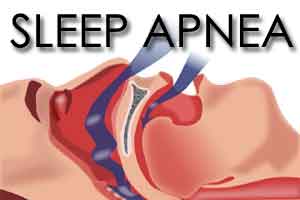- Home
- Editorial
- News
- Practice Guidelines
- Anesthesiology Guidelines
- Cancer Guidelines
- Cardiac Sciences Guidelines
- Critical Care Guidelines
- Dentistry Guidelines
- Dermatology Guidelines
- Diabetes and Endo Guidelines
- Diagnostics Guidelines
- ENT Guidelines
- Featured Practice Guidelines
- Gastroenterology Guidelines
- Geriatrics Guidelines
- Medicine Guidelines
- Nephrology Guidelines
- Neurosciences Guidelines
- Obs and Gynae Guidelines
- Ophthalmology Guidelines
- Orthopaedics Guidelines
- Paediatrics Guidelines
- Psychiatry Guidelines
- Pulmonology Guidelines
- Radiology Guidelines
- Surgery Guidelines
- Urology Guidelines
Soon at PGI Chandigarh: Tongue pacemaker for sleep apnea patients

Chandigarh: Patients who suffer from Obstructive Sleep Apnoea and are unable to use/tolerate a mask or a CPAP may now soon have access to a news technology to get relief. The relief is likely to come in the format of a new technology known as a tongue pacemaker, an implant which can be implanted in the collarbone of a patient to correct the pauses in the breathing cycle during sleep and prevent the resultant snoring
This technology may also be likely going to show its face at the premier medical institute Post Graduate Institute of Medical Education & Research, Chandigarh (PGI Chandigarh), which is reported to be planning to introduce this technology.
"The tongue pacemaker is required in India, especially in North India, as a large number of people are suffering from sleep apnoea,” according to Dr. Sandeep Bansal from the ENT Department, PGI Chandigarh.
Also Read: Excessive daytime sleepiness in sleep apnea doubles risk of heart attack
“In Europe and North America, the use of tongue pacemakers is quite prevalent. It costs 22, 000 US dollars. The cost may come down in the near future. It takes two hours to be implanted. In Germany, the technology helps cure 1,000 patients every year. One needs to change its battery after 10 or 15 years,” Clemens Heiser from government-run University Hospital in Munich told The Tribune.
Also Read: Obstructive sleep apnea more harmful for women’s heart than men
Obstructive sleep apnea (OSA) is a common but dangerous sleep disorder that leads to an increased risk for left ventricular and, more rarely, right ventricular dysfunction in the heart. It is the most common type of sleep apnea that occurs due to intermittent relaxation of the throat muscles and blockage of the airway while a person sleeps. Common symptoms include loud snoring, gasping for air during sleep, morning headache, irritability and gasping for air during sleep. The OSA may lead to silent heart attack, uncontrolled diabetes, blood pressure problems or morning headache. The chances of occurrence in obese people are much higher.

Disclaimer: This site is primarily intended for healthcare professionals. Any content/information on this website does not replace the advice of medical and/or health professionals and should not be construed as medical/diagnostic advice/endorsement or prescription. Use of this site is subject to our terms of use, privacy policy, advertisement policy. © 2020 Minerva Medical Treatment Pvt Ltd